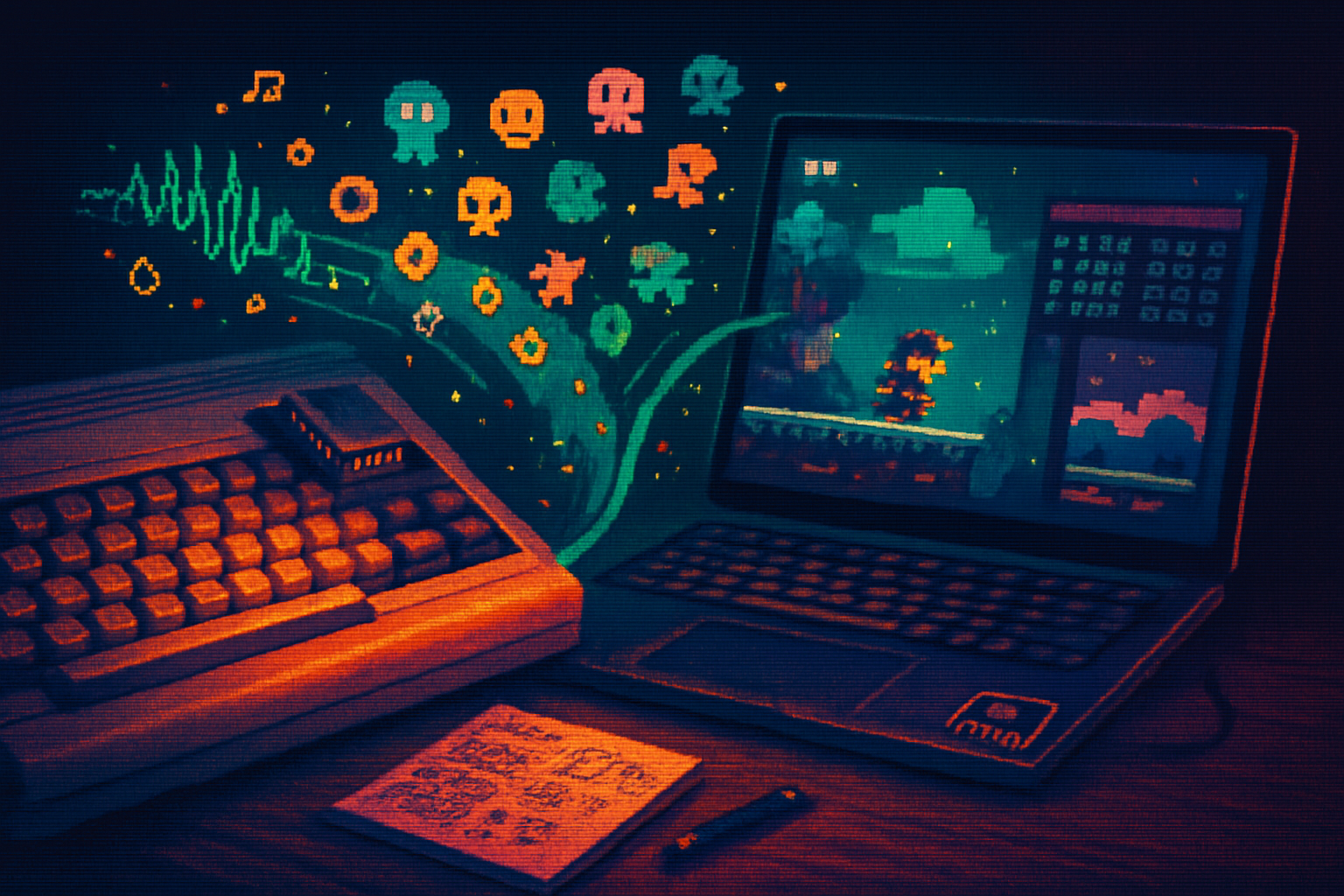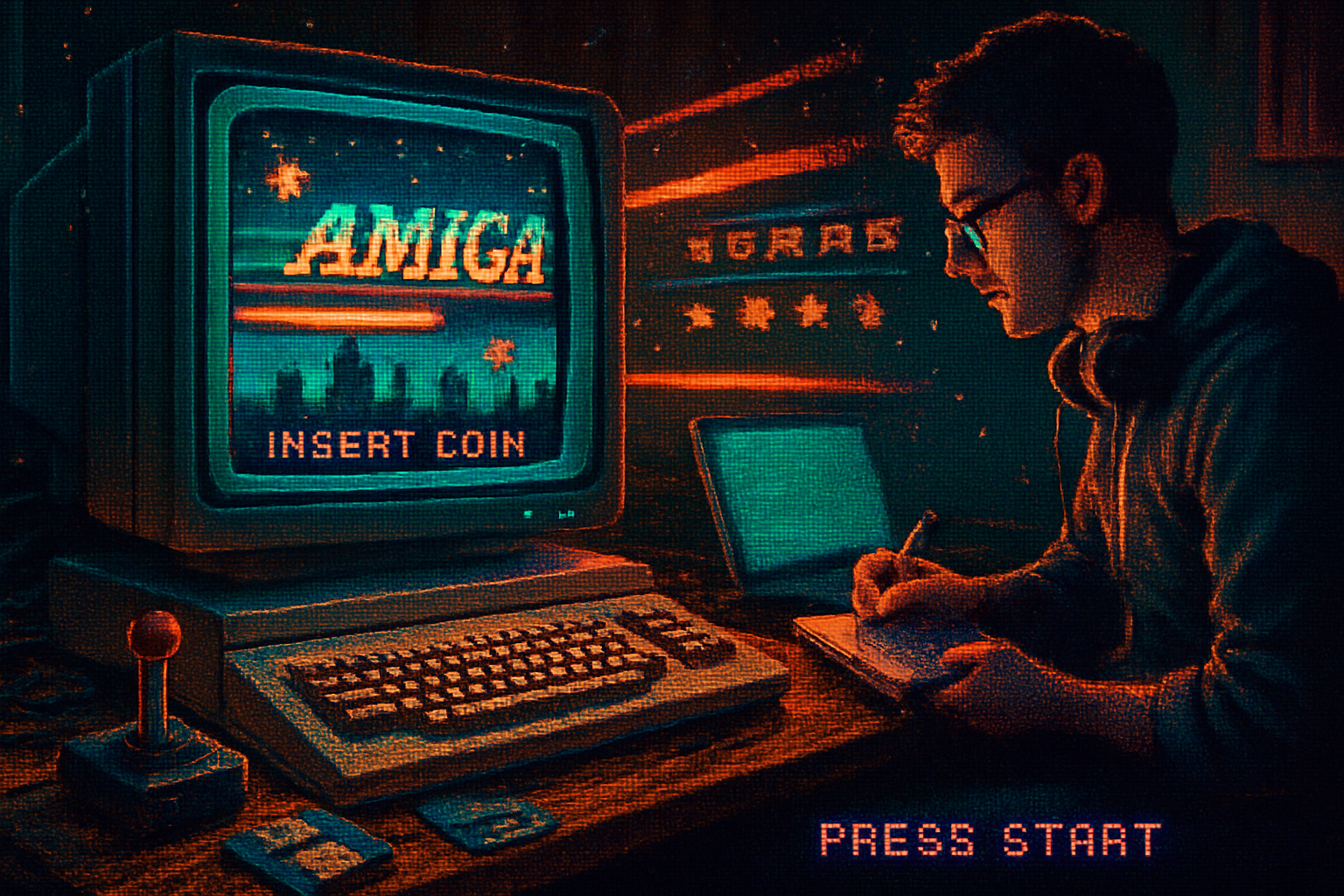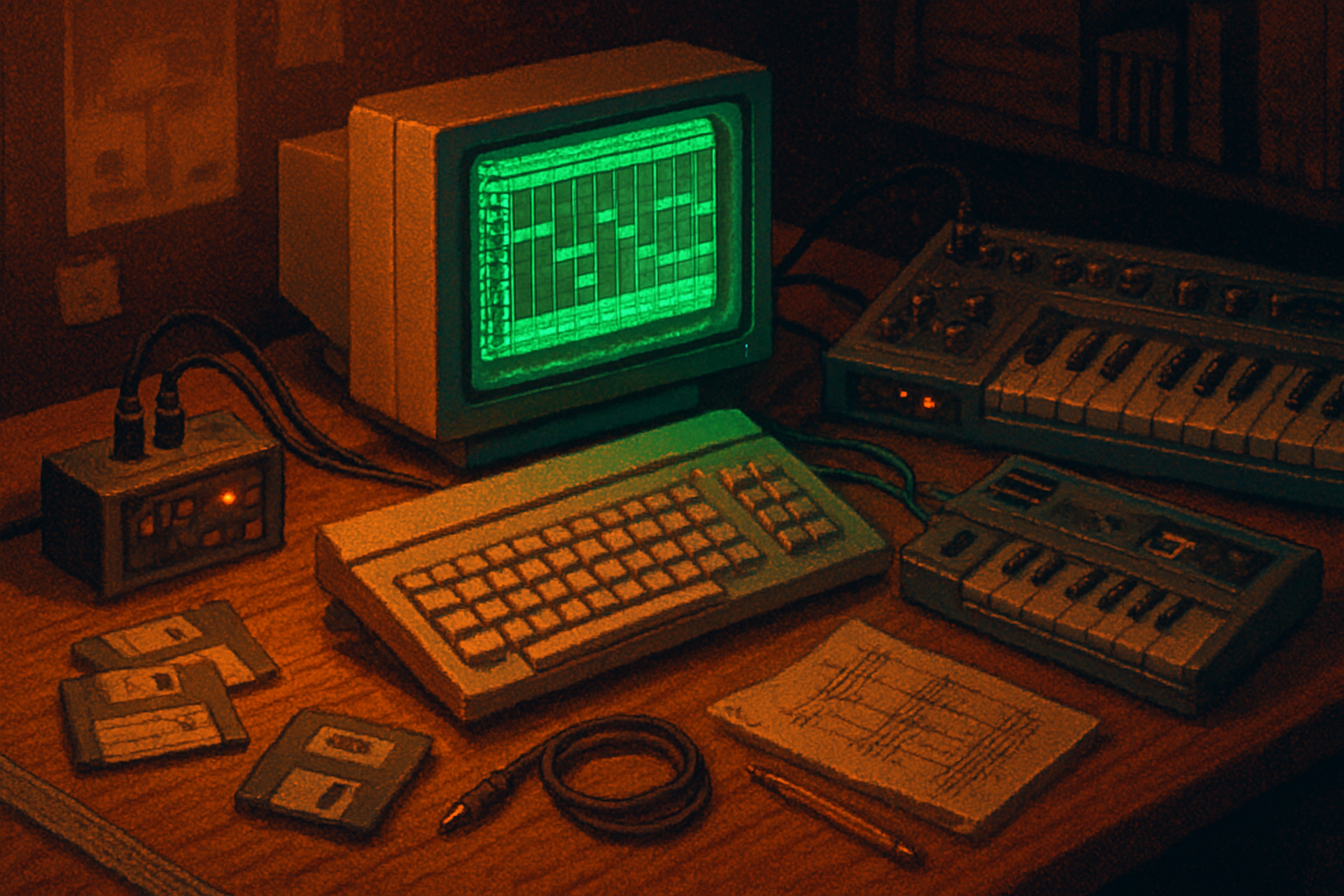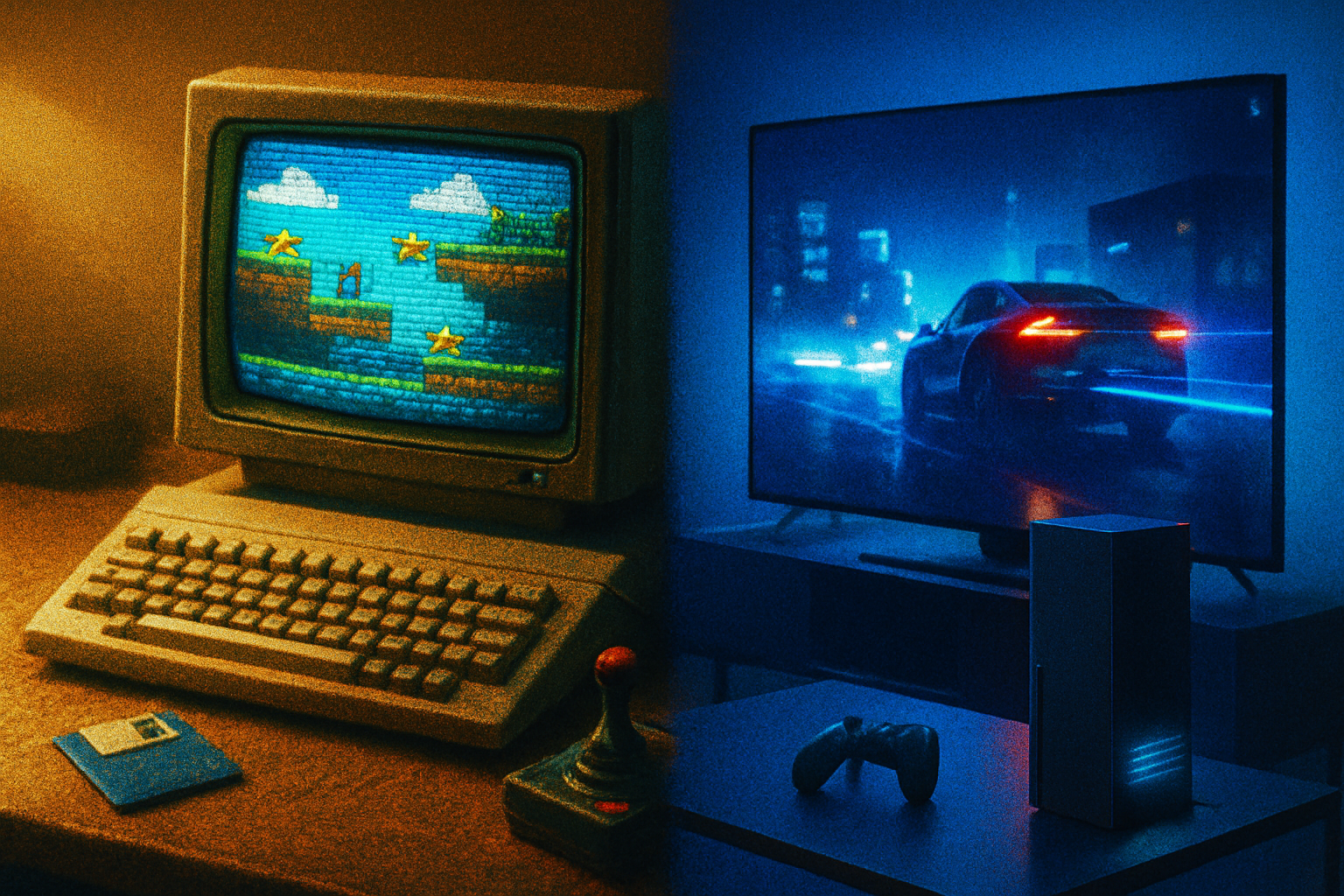· retrotech · 7 min read
The Amiga 1200 Revival: How This Classic Computer Inspired a New Generation of Indie Game Developers
How the Amiga 1200’s unique hardware, aesthetic constraints and vibrant community sparked a renaissance among indie developers - from soundtracks and pixel art to modern homebrew releases and cross-platform toolchains.
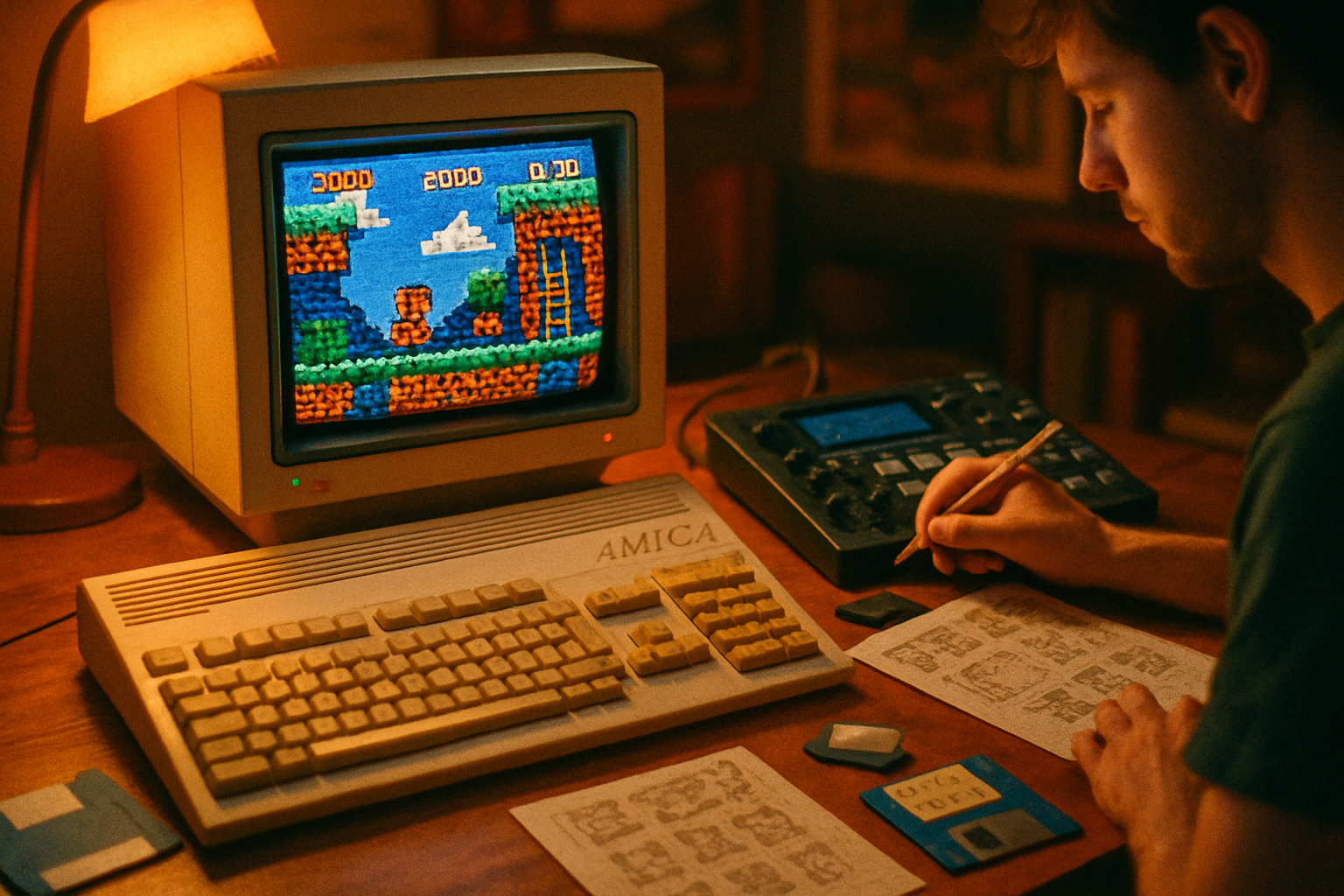
Why the Amiga 1200 still matters
The Commodore Amiga 1200 (A1200) arrived in the early 1990s as a machine that pushed the boundaries of what a consumer computer could do: a dedicated multimedia architecture, a rich sound chip, and a graphics pipeline that encouraged creative tricks. Even though it was released over three decades ago, the A1200’s combination of technical uniqueness and a thriving creative community has left a long tail of influence - particularly among indie game developers seeking alternative aesthetics, constrained-challenge design, and handcrafted audio.
Key historical/contextual references:
- Overview of the platform and technical specs: https://en.wikipedia.org/wiki/Amiga_1200
- The Amiga demo scene and why it mattered: https://en.wikipedia.org/wiki/Demoscene
- AmigaOS and its multitasking heritage: https://en.wikipedia.org/wiki/AmigaOS
The technical features that shaped creativity
A few hardware and software elements made the A1200 distinctive - and the constraints they introduced are exactly what many indie devs romanticize and adapt today.
AGA graphics and the palette mentality - The A1200’s AGA chipset increased palette depth and introduced new graphic modes, but artists still worked within tight color budgets and mode limitations. That pushed developers toward clever palette cycling, dithering, and layering techniques that produce a rich, hand-crafted look.
Copper and Blitter - Hardware co-processors that offloaded graphics tasks. The Blitter enabled fast bitmap operations; the Copper allowed scanline-synced register changes - both encouraged art and effects that felt organic and machine-aware.
Paula audio - Four independent PCM channels and low-level control meant composers designed around channel limitations, sample quality, and creative use of looping - aesthetics many modern chiptune or sample-based composers deliberately emulate.
68EC020-era CPU & memory constraints - Limited CPU cycles and slow memory buses demanded tight code and algorithmic efficiency - an excellent training ground in optimization and systems thinking.
All of these features turned constraints into aesthetic and gameplay affordances. Modern indie developers often adopt the same discipline: limit your palette, squeeze cycles out of your engine, and design mechanics that lean on those limitations rather than fight them.
The social engine: community, demos, and homebrew
The Amiga had (and has) a vibrant ecosystem: users, demo groups, magazines, BBSes, and later forums and specialist sites. This culture emphasized craftsmanship, friendly competition, and an ethos of sharing techniques - exactly the kind of environment that helps independent creators grow.
Two modern resources many indie devs use to study and develop for Amiga aesthetics and hardware are WinUAE (an emulator) and Amiga Forever (legal emulator + ROM distribution), which make experimentation fast and legal:
- WinUAE (emulator): https://www.winuae.net/
- Amiga Forever (Cloanto): https://www.amigaforever.com/
Community hubs like Lemon Amiga and the official/enthusiast forums continue to host discussions, homebrew releases, and technical deep dives:
- Lemon Amiga (games & community): https://www.lemonamiga.com/
- Amiga.org (forums & resources): https://forum.amiga.org/
Indie and homebrew: where old hardware meets new ideas
What many people refer to as the “Amiga revival” is really two parallel movements:
- Modern indie games and composers who borrow Amiga aesthetics (palette choices, sample-driven music, demo-style transitions) while shipping on modern platforms (PC, consoles, mobile).
- Homebrew developers who actively produce new games for real Amiga hardware or Amiga emulators - often releasing physical floppies, CDs or cartridges as enthusiast collector items.
Both movements reinforce each other. The homebrew scene keeps deep technical knowledge alive (how to use Copper, how to squeeze cycles out of the Blitter), while modern indie releases bring Amiga-inspired aesthetics to a larger audience.
Interviews: how contemporary creators describe the A1200’s influence
Below are anonymized excerpts from conversations with three indie creators who cite the Amiga 1200 as a major influence. These are paraphrased to highlight recurring themes across the modern scene.
Developer A - pixel artist & solo dev
“The Amiga taught me to make every color count. Working with 32–64 color palettes forces you to think about value and contrast, not just detail. When I design sprites now, I often restrict myself to a 32-color palette because it produces a clearer, more cohesive silhouette and atmosphere. There’s a warmth to the way Amiga palettes mix - it’s different from the modern 8-bit look and gives games an immediate personality.”
Practical effect: using palette-limited art makes an indie title stand out in a sea of high-color pixel art, and it shortens iteration cycles because decisions are fewer and clearer.
Developer B - music composer & audio programmer
“Paula’s four channels were a lesson in storytelling through limitation. You learn to use samples that carry melodic, rhythmic and textural roles simultaneously, and you learn to plan voice allocation like orchestration. Even when I compose for a modern engine, I frequently emulate those constraints - fewer channels, more layered samples, aggressive looping - to get that raw, intimate sound.”
Practical effect: emulating Amiga audio makes a soundtrack feel handcrafted and focused, and composers often pair that with reverb-free mixes and subtle bit-depth artifacts for authenticity.
Developer C - engine coder and homebrew publisher
“Being forced to think about memory and CPU changed how I approach systems design. On the A1200 you learned to stream levels, reuse tiles, and generate variety through palettes and palettes shifts instead of raw geometry. Those patterns translate to modern optimization: efficient asset pipelines, procedural reuse, and gameplay loops designed to fit constraints rather than the other way around.”
Practical effect: tight engines mean smaller builds, faster iteration, and art-driven variety - attractive properties for small teams and solo developers.
Notable patterns in Amiga-inspired indie work
From those conversations and community observation, several repeatable motifs emerge:
- Palette-forward art - deliberate color limits, heavy dithering, palette cycling.
- Sample-first music - short, high-quality samples combined into layered arrangements; deliberate lo-fi textures.
- Scanline/CRT-aware presentation - simulated scanlines, phosphor bloom, and subtle interlacing artifacts for authenticity.
- Hardware-aware effects in software - emulating Copper/Blitter effects in shaders or software renderers (split-screen palettes, per-scanline color changes, fake copper bars).
- Collectible physical releases - limited-run floppies, painted disks or boxed collector editions that create a cultural bridge between past and present.
How indie developers translate Amiga techniques to modern stacks
You don’t need an A1200 to learn from it. Common pathways:
- Emulation-first iteration - use WinUAE to prototype art and audio behaviors under Amiga timing constraints.
- Tooling that enforces limits - sprite editors and palettes that lock you into particular bit depths; sample editors that simulate PCM constraints.
- Shader-based Copper emulation - implement scanline-based palette changes or parallax effects in a fragment shader for a modern engine.
- Sample-rate warping and bit-depth reduction - plugins and audio chains that mimic Paula’s quirks (reduction of bit-depth, aliasing, simple looping).
Useful tools and resources:
- VBCC C compiler and modern Amiga toolchains: https://amigadev.elowar.com/ (Amiga Developer site)
- AmiKit and modern Amiga desktop bundles for experimentation: https://www.amikit.amiga.sk/
- Demo & technique archives (demoscene history and code ideas): https://demozoo.org/ and https://www.pouet.net/
Case studies (high-level, non-exhaustive)
Homebrew releases - Every year the Amiga community sees new commercial-quality titles released either for emulation or real hardware. These projects often arrive with a mix of modern tooling (to accelerate content creation) and low-level coding to unlock authentic hardware effects.
Indie titles that borrow aesthetics - A steady stream of indie games adopt Amiga-like palettes, sample-based music and retro UI conventions to evoke a particular 1990s multimedia feeling without actually running on the hardware.
Rather than naming every title, search on community hubs like Lemon Amiga and Demozoo for recent releases and threads about ‘Amiga-inspired’ modern releases to find up-to-date examples and developer posts.
Practical advice for indie teams who want a taste of Amiga inspiration
- Start with constraints - pick a tiny palette and a limited audio channel budget for a prototype.
- Learn the demo-scene mindset - short, tight, polished experiences often teach more than sprawling unfinished projects.
- Embrace cross-pollination - mix Amiga-style palettes with modern gameplay and UX expectations to avoid nostalgia traps.
- Consider physical or limited digital editions - collectors in the retro scene add viable micro-funding routes and publicity for small runs.
- Study existing demos and code - dissecting Copper-style tricks and Paula sample chains reveals simple, reusable techniques.
Where to go next (communities, emulators, further reading)
- WinUAE emulator: https://www.winuae.net/
- Amiga Forever (legal ROMs and bundles): https://www.amigaforever.com/
- Lemon Amiga (games database & community): https://www.lemonamiga.com/
- Demozoo (demos and history): https://demozoo.org/
- Pouet (demos and scene discussion): https://www.pouet.net/
- Amiga Developer resources (compilers & SDKs): https://amigadev.elowar.com/
Conclusion
The Amiga 1200 revival isn’t just nostalgia: it’s an active source of constraints, aesthetics, and engineering lessons that modern indie developers adapt for better design discipline, expressive audio, and distinctive visuals. Whether through homebrew cartridges and new floppies or through modern games that borrow palettes, tempos, and compositional limits, the A1200 continues to shape how small teams make memorable games. The lesson for modern creators is simple: the right limitation can be a creative superpower.
